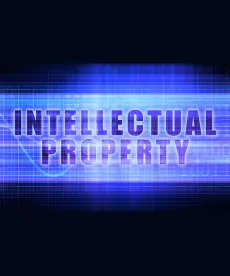In two recent decisions, judges of the US Court of Appeals for the Federal Circuit expounded on the standards under which software-related patent claims are subject matter eligible under 35 USC § 101. Ancora Techs. v. HTC Am., Inc., Case No. 18-1404 (Fed. Cir. Nov. 16, 2018) (Taranto, J); CyWee Grp. Ltd. v. Samsung Elecs. Co., Case No. 2:17-CV-140-WCB (E.D. Tex. Nov. 7, 2018) (Bryson, J, sitting by designation).
In Ancora, HTC moved under § 12(b)(6) to dismiss Ancora’s infringement action, arguing that the asserted claims were invalid as patent ineligible under § 101. Section 101 defines patent-eligible subject matter as “any new and useful process, machine, manufacture, or composition of matter, or any new and useful improvement thereof.” Laws of nature, natural phenomena and abstract ideas are ineligible. After the district court determined that the claims were directed to an abstract idea and dismissed the action, Ancora appealed to the Federal Circuit.
The patent in issue was for “Restricting Software Operation Within a License Limitation” and taught that among “[n]umerous methods . . . for the identifying and restricting of an unauthorized software program’s operation,” software-based methods require writing a license signature on the computer’s hard drive, and hardware-based methods require inserting a costly and inconvenient software-authentication dongle. The patent’s self-described improvement embeds a non-removable, non-modifiable unique identification code “key” in the read-only memory of the computer’s Basic Input Output System (BIOS) module. Each application program licensed to run on the computer is associated with a license record (author and program names, and number of licensed network users). Storing this license record in a “verification structure” created in a portion of BIOS memory that “may be erased or modified” uses “existing computer hardware (eliminating [additional] expense and inconvenience . . . while storing the verification information in a space that is harder and riskier for a hacker to tamper with than storage areas used by earlier methods.”
The district court granted HTC’s motion to dismiss after concluding that under the two-step Alice/Mayo analysis (IP Update, Vol. 17, No. 7), the claims:
- Focused “on the abstract concept of selecting a program, verifying whether the program is licensed, and acting on the program according to the verification”
- Contained no “inventive concept” of something significantly more than the abstract idea because “[s]pecifying that the BIOS be used to house the verification structure” calls for nothing more than “[s]toring data in the memory of a computer component that generally stores data”
On de novo review, the Federal Circuit reversed.
The panel first considered whether, under Alice step one, the district court correctly characterized the “‘claimed advance’ in the process of determining whether the claims were directed to an abstract idea” (citing Finjan quoting Enfish, regarding software innovations where the eligibility issue turns on “whether the claims focus on ‘the specific asserted improvement in computer capabilities . . . or, instead . . . computers are invoked merely as a tool.’”) In this case, the Federal Circuit analogized the invention to those at issue in Finjan, Enfish, Visual Memory, Core Wireless and Data Engine. The Court found that the claimed method specifically identified how the non-abstract computer-functionality improvement is effectuated, and therefore concluded that the claim was not directed to an abstract idea.
The Ancora case was decided on the heels of a decision rendered just a week earlier by Federal Circuit Judge William C. Bryson (sitting by designation) in the Eastern District of Texas in CyWee v. Samsung Elecs. In CyWee, Samsung moved for summary judgment of invalidity under § 101 against patents asserted by CyWee directed to 3D pointing devices and methods for compensating movement/rotation. Samsung argued that the asserted claims were patent-ineligible because “CyWee’s patent claims merely recite algorithms that operate on data obtained from convention sensors.” Judge Bryson denied the motion, explaining that conventional or unconventional use is not critical to the determination of subject matter patentability.
As Judge Bryson further explained, under Supreme Court of the United States and Federal Circuit precedent (Flook, Diehr, Thales Visionix), while mathematical formulas are not patentable, claims containing mathematical algorithms may be, depending on the role the formula plays: “Claims are patent eligible under § 101 ‘when a claim containing a mathematical formula implements or applies that formula in a structure or process which, when considered as a whole, is performing a function which the patent laws were designed to protect.’”
CyWee’s patent claimed a particular combination of sensors used to gather raw data points relating to an object’s position. Those data points were then used in a mathematical formula to determine the orientation of the object in a spatial reference frame. Judge Bryson emphasized that such equations must be viewed in conjunction with all other claim components to examine what is new and useful (and avoid foreclosing more than necessary). Analogizing to the patent-eligible technologies at issue in Thales and Diehr, Judge Bryson found that the invention defined by CyWee’s apparatus claims performed a specific, useful function by a particular device to have tangible, physical results from the receipt and assessment of information, and that the method claims used inputs from six- and nine-axis sensors to track the orientation status of the 3D pointing device and correct errors associated with conventional motion detectors.
Judge Bryson stressed that although the Federal Circuit recognized the unconventional positioning of the sensors in Thales, this was not critical to patentability (as evidenced by the court determining patent-eligibility without reaching Alice step two). Quoting Diehr, Judge Bryson stated that unconventional use is “additional evidence,” but “[t]he ‘novelty’ of any element or steps in a process, or even of the process itself, is of no relevance in determining whether the subject matter of a claim falls within the § 101 categories.”



 />i
/>i
